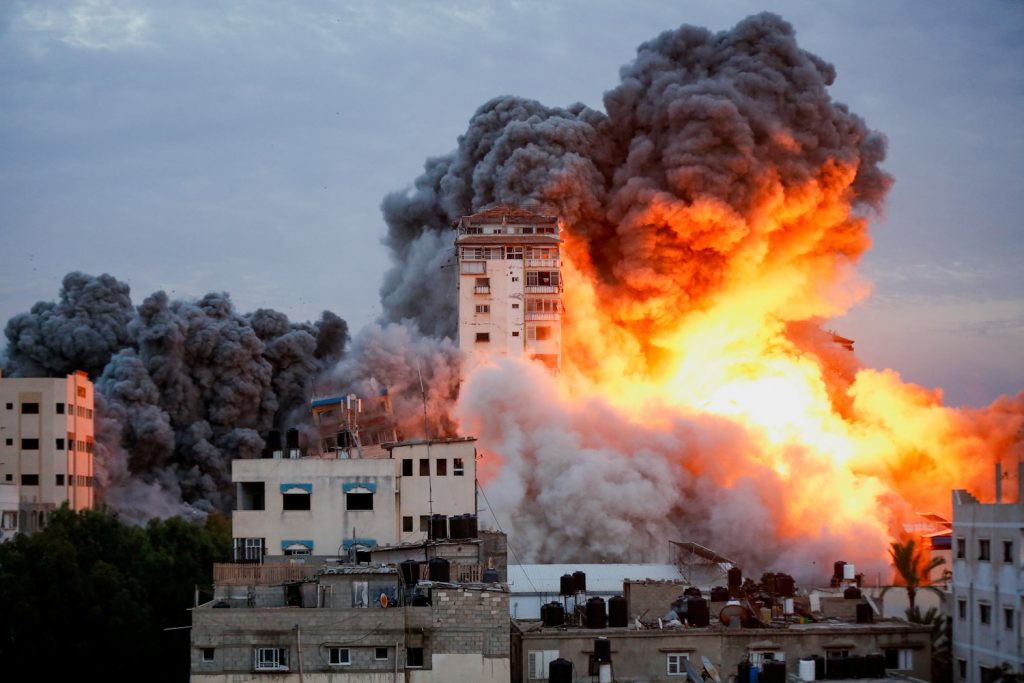The helplessness of the US administration in reining in Israel wreaking havoc on the not so innocent Palestinians in Gaza in the name of uprooting Hamas is evident. The US has only started making some feeble noise intended as peace overtures by meekly appealing to Israeli Prime Minister Benjamin Netanyahu to order a ‘pause’ on its brutal, military attacks and incursions into Gaza Strip so that medical and other humanitarian aids can reach over two million displaced Palestinians. By such a response, the US has shown that it has no intention to seriously try to restrain Israel which is on a killing spree. Apart from it being globally insulted that all the big noise it made in the past about its constant preparedness for war was nothing in reality, Israel is unable to carry the psychological burden of hostages that it has been loaded with by the Hamas.
The US has too great a stake in the Middle East and its most trusted and dependable ally in the region, Israel, alone can safeguard its interests. Many liberal experts of America have categorically pointed out if the US administration decides not to supply arms and ammunition and other aids worth billions of dollars to Israel, the latter’s belligerence would be immediately controlled. That is next to impossible due to America’s geopolitical equations in the Arab world.
US secretary of state, Antony Blinken, met senior Jordanian and other Arab officials in Amman November 4 in the latest effort by Washington to avert a regional escalation of the war, ease the acute humanitarian crisis in Gaza and build support for planning a post-conflict future for the territory. The trip was his second to the Middle East since the conflict began almost a month ago. On that very day Palestinians reported a deadly Israeli strike on a UN-run school in northern Gaza serving as a shelter for refugees. Witnesses said the strike hit al-Fakhoura school in Jabalia, where thousands of evacuees were living. At least 15 people died and dozens were wounded. The confirmation of the bombardment by Juliette Touma, the director of communication for the UN Palestinian refugee agency (UNRWA), shows the incident did take place and was not a war propaganda to blacken Israel military actions.
The ineffectual intervention by the US makes it clear that there is no sign that Israel will ease its effort to “crush” Hamas in Gaza. The health ministry in Hamas-run Gaza says more than 9,220 people have, so far, been killed in Israeli bombardments, most of them children or women. Despite Netanyahu’s statement that the offensive in Gaza would continue with full force, the US administration is continuing talks with Tel Aviv, though it does not inspire much hope of ending the retaliation any time soon.
On the contrary, Israel’s planned ground offensive means ever deeper incursions into the narrow strip of land the objective of which is the encirclement of Gaza City, accompanied by massive strikes targeting Palestinian militia infrastructures. Debatably this is how Israel wants to exercise its right to defend itself after the massacre of innocent Israeli civilians on October 7. Israeli authorities assert their aim is to respond to terror not by seeking revenge at any price, but by setting a military objective which is the destruction of Hamas.
The objective may not be fulfilled as easily as Israel wants the world to believe. There are at least three obstacles in their way. The first is that Hamas’ military infrastructure is so much interwoven into the urban fabric of Gaza – one of the most densely populated areas on the planet- that the goal cannot be achieved without carrying out total destruction of the city and of lives on an unprecedented scale. This could only help unite the Arab world against Israel the way never seen before. Experts say this way Israel is getting into the trap set by Hamas’ strike in southern Israel.
The second obstacle is the survival conditions of Palestinians in a territory that has been under blockade since 2007. Humanitarian aid that is trickling through the Rafah crossing on the border between Gaza and Egypt is too meagre to meet the basic needs of a population of over 2 million. The third difficulty is the presence of at least 240 hostages captured on October 7 by Hamas. These hostages are believed to be held in the tunnels that are the main target of the Israeli bombardments.
All these factors coupled with the worldwide repercussions of the images of the suffering of Gaza’s civilians are going against Israel. By insisting that it will not stop till the last Hamas foot soldier is alive, Israel is only helping the latter’s cause. It is simple to ask for the military offensive to stop immediately and both sides should return to the negotiation table as several Arab countries are urging Israel. That goal is extremely difficult to achieve. It is also a very tricky situation where it is impossible to claim either side as ‘innocent’ or ‘culprit’. Both, Israel and Hamas, are equally responsible for the war and suffering that is taking place today.

